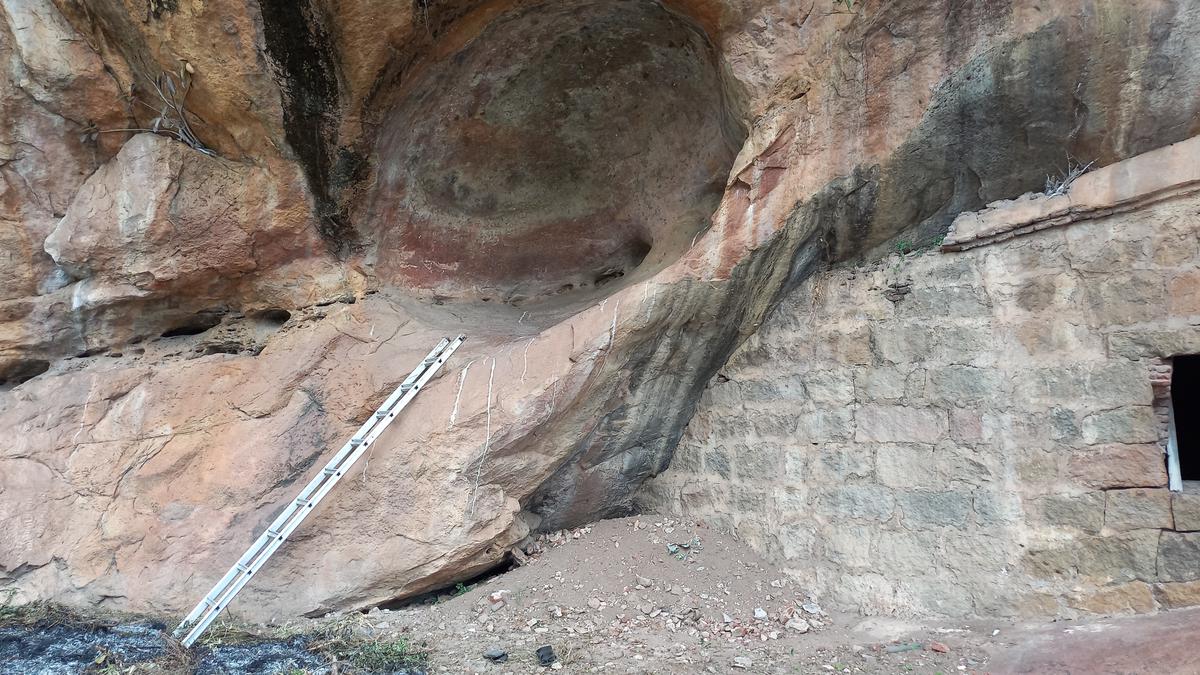
4 natural caverns found at Tirumayam hillock; one contains rock art paintings
The Hindu
In Pudukottai district, four natural caverns, believed to be prehistoric dwellings, were found on the Tirumayam hillock. Ancient rock art paintings were found in one of the caverns, estimated to date back to 2,500-3,000 BC. The other three caverns are closed, and may contain similar paintings.
A contiguous group of four natural caverns, believed to have been the dwelling sites of prehistoric man, were found at the southern ledge of the Tirumayam hillock in Pudukottai district, with one of them containing ancient rock art paintings.
The caverns were noticed during a field study by a three-member team led by J. Raja Mohamad, former curator of the Pudukottai Government Museum. V. Muthu Kumar, assistant archaeologist of the Archaeological Survey of India, and G. Karunakaran, a research scholar at Tamil University in Thanjavur, were the other members.
“The caverns were probably the abode and settlements of prehistoric man,” Mr. Mohamad said. The first cavern, situated closer to the tank of theSiva temple on the hillock, was filled with soil in its interior. Ancient rock art paintings in red colour were found on the ceiling of the second cavern.
“Most of the paintings have either faded or been defaced. We identified some human figures and impressions of human hands from the available good portions,” said Mr. Mohamad, the president of the Pudukottai Historical and Cultural Research Centre. The first cavern is filled with debris. The second one, slightly smaller in size and is at a higher level from the ground, can accommodate a few persons in its interior. The third cavern is bigger in size, but the entrance has been closed with masonry work. The fourth cavern is also closed.
Calling it a “significant find”, Mr. Mohamad said the ancient rock art paintings in one of the caverns were similar to those found elsewhere in Tamil Nadu, dating back to 2,500-3,000 BC. The present panel may also belong to this period, he said, adding that scientific techniques would help determine its exact period.
Dr. Mohamad believed that the closed caverns could also contain similar paintings. The Tirumayam hillock has a 17th Century fort at the top and cave temples of Siva and Vishnu on its southern side. A panel of rock art paintings were found in 2001 by Mr. Mohamed and his team on the same hillock in a boulder on the way to the fort.
Similar caves have also been found at Narthamalai, Ammachathram, Thenimalai and Sittannavasal in the district.













